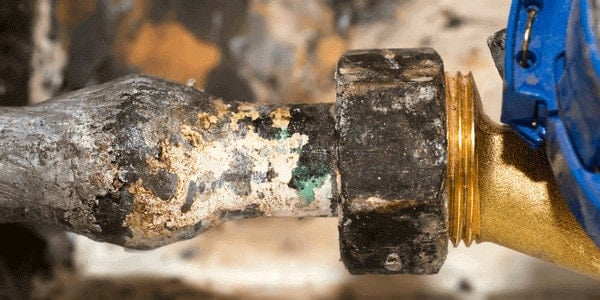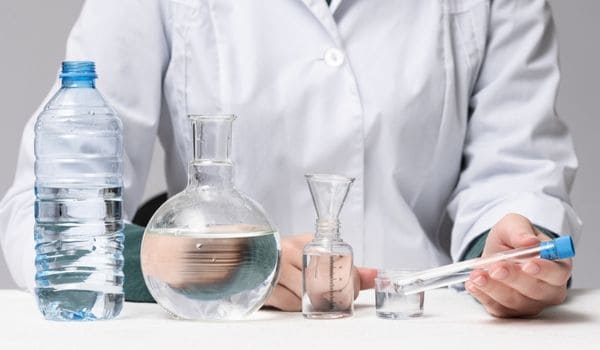If you’re worried about what’s coming out of your tap, you’re not alone. Old plumbing, aging infrastructure, and overlooked maintenance can sometimes leave traces of heavy metals right where you least expect them — in your drinking water.
The good news? With the right testing and treatment, you can take control and make sure your water is clean, safe, and something you never have to second-guess.
🧠 Quick Takeaways:
- ✅ Lead Has No Taste or Smell — Only testing can reveal if it’s there
- ✅ Outdated Pipes Are a Major Culprit — Especially in homes built before 1986
- ✅ Young Children and Pregnant Women Are Most at Risk — Even small amounts matter
- ✅ Filtration Systems Can Help — Reverse osmosis, carbon filters, and ion exchange are strong options
- ✅ Testing Is the First Step — Lab tests or kits can quickly show if action is needed
🧲 What Is Lead, Really?

Lead’s been around forever. It’s heavy, useful, and for a long time, nobody thought twice about using it in paint, pipes, or fuel.
These days? We know better.
In small doses — like in sealed batteries — it’s harmless. But when it slips into your drinking water? That’s where things get dicey.
The problem usually isn’t lakes or rivers. It’s aging pipes, solder joints, and old plumbing fixtures slowly leaching lead as water flows through.
- 🧵 Quick Fact: Before 1986, solder used in home plumbing often contained lead — even if your pipes are copper.
💬 Good to Know: Lead doesn’t take much to cause trouble. Kids and pregnant women are especially sensitive, and long-term exposure can sneak up without symptoms.
Further reading: Signs you might have lead in your water
🩺 Why Lead in Water Matters

Lead hits the body where it hurts — especially over time. And the worst part? You might not even know it’s there.
While anyone can be affected, it’s young kids, babies, and pregnant women who are most at risk. Even tiny amounts can mess with: development, behavior, and learning.
⚠️ Long-term exposure has been linked to:
- Fatigue or irritability
- Headaches and stomach pain
- High blood pressure
- Memory issues
- Fertility struggles
- Slowed growth in children
You won’t smell lead. You won’t taste it. That’s why testing — and filtering — matter so much.
💡 Pro Tip: According to the CDC, lead paint is still a bigger culprit in kids — but water can absolutely contribute. Especially if your pipes or fixtures are older than 1986.
🚰 How Lead Sneaks Into Your Tap

Lead doesn’t start in the water — it sneaks in after it leaves the treatment plant.
That’s the kicker: the water may be clean at the source, but then it hits miles of old service lines, solder joints, and outdated fixtures that haven’t been replaced since cassette tapes were cool.
🔎 Here’s where the problem usually starts:
- 🏚️ Older Homes – Built before 1986? You might still have lead solder or brass fixtures
- 🔩 Aging Pipes – Especially lead service lines between the street and your house
- ⚠️ Corrosion Issues – If water is too acidic or not treated properly, it can eat away at those pipes and leach lead into your drinking water
💬 Good to Know: Even copper pipes can be guilty — it’s the old solder used to connect them that’s often the hidden source.
🛠️ Best Ways to Remove Lead

Lead might be sneaky, but getting rid of it isn’t rocket science. The key is choosing the right filtration method based on where the problem is (and your budget).
Here’s a quick cheat sheet:
| 🧪 Filtration Method | ✅ Best For | ⚡ Strengths |
|---|---|---|
| Activated Carbon Filters | Faucet filters, pitchers, under-sink units | Affordable, easy to install, reduces lead + chlorine + bad tastes |
| Reverse Osmosis (RO) Systems | Under-sink and whole-house setups | Removes 99% of lead and dozens of other contaminants |
| Ion Exchange Filters | Whole-house systems (similar to water softeners) | Effective for lead and other heavy metals |
| Distillation Systems | Countertop units for small batches of water | Highly effective but slow and energy-intensive |
🔎 Picking the Right Filter Setup
If you just want safer drinking water at the kitchen sink, a certified pitcher or faucet filter might be all you need.
If you want protection at every tap (including showers), a whole-house system like reverse osmosis or ion exchange makes more sense.
💬 Pro Tip: Always look for systems that are NSF/ANSI certified for lead removal — it’s the best proof that the system actually works.
By considering these factors — you can confidently choose the lead removal solution that best suits your home’s needs.
See our recommended lead removal filters
🧪 How to Check Your Water for Lead

Testing your water for lead isn’t complicated — but choosing the right method can save you a lot of guessing (and stress). Whether you want fast peace of mind or lab-verified accuracy, there’s an option that fits.
| 🧪 Test Method | 👍 Pros | ⚠️ Cons |
|---|---|---|
| 🏢 Lab Testing | Highest accuracy; checks for multiple contaminants | Costs more; results take a few days |
| 🏠 Home Test Kits | Affordable and fast; easy for quick checks | Less accurate than lab results; depends on user technique |
| 🧑🔧 Professional Water Inspections | Full service; expert advice included | More expensive; scheduling required |
🔎 Pro Tip: If you want certified results without the guesswork, this independent water testing kit covers lead, bacteria, and more. It will give you the most complete and trustworthy picture — no second-guessing.
🏠 Point-of-Use vs Whole-Home Filters

When it comes to filtering lead, not all systems do the same job — and where you install them matters just as much as how well they work.
Here’s a quick side-by-side breakdown:
| Filter Type | Best For | Good to Know |
|---|---|---|
| 🚰 Point-of-Use (POU) | Drinking water at a single tap | Targets lead leaching from pipes after water enters your home |
| 🏡 Whole-House (POE) | Water throughout the entire home | Best for tackling lead coming from the main water line |
🧠 Quick Tip: Since skin doesn’t absorb lead easily, whole-house systems aren’t always necessary unless your entire plumbing system is contaminated. If drinking water is your main concern, a point-of-use filter at the kitchen sink offers major bang for the buck.
🧼 Final Thoughts
Lead exposure isn’t always obvious — it’s silent, invisible, and serious. Testing your water is the first real step toward protecting yourself and your family.
The good news? You’ve got options. From quick faucet filters to serious whole-house systems, there’s a lead solution for every home and budget.
And remember — it’s not just about removing lead today. It’s about keeping your water safe for the long haul.
Because peace of mind should always come standard with every glass you pour. 🥛✨
 131 people found this helpful. Was this guide helpful to you?
131 people found this helpful. Was this guide helpful to you? 


